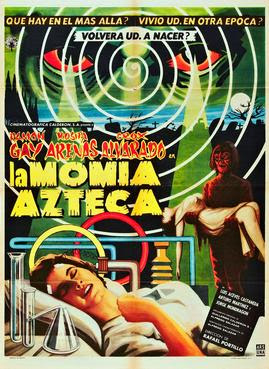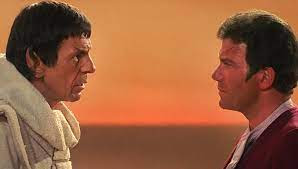PHENOMENALITY: *marvelous*
MYTHICITY: *fair*
FRYEAN MYTHOS: *adventure*
CAMPBELLIAN FUNCTIONS: *metaphysical, sociological*
The “Classic Era” of film serials
is often said to begin with 1936’s FLASH GORDON, which in terms of expense and
overall quality marked a new level of ambition. Even the better serials of the
early thirties are not that distinct from the silent chapterplays of the
twenties. Film studios began investing
more heavily in adapting properties from assorted media, such as pulps, radio
and comic strips. Republic attempted to adapt SUPERMAN at the height of the character’s
popularity. But when negotiations with DC Comics broke down, the studio
successfully got the rights to Superman’s greatest competitor Captain Marvel,
who had the honor of being the first comic-book character adapted to film.
The original Captain Marvel was, in many ways, an attempt to
one-up the Man of Steel. The first adventures of Superman give him assorted
limitations: he could leap but not fly, and his skin could in theory be damaged
by an exploding shell. Over time Superman would take on a host of new powers
and become invulnerable to everything but kryptonite. Yet Captain Marvel had no
real weaknesses in his superheroic form; he only risked injury when he assumed
the mortal form of Billy Batson. The serial’s writers and directorial team (the
stalwarts William Witney and John English) may have anticipated that a totally
invulnerable hero would prove difficult to place in peril, and so, while they
did put his mortal identity in peril at times, this Captain Marvel, as essayed
by the athletic Tom Tyler, proved somewhat vulnerable to dangers like molten
lava and electrical discharge—though naturally the filmmakers did not eliminate
one of his primary appeals: the resistance to gunfire.
Possibly the filmmakers did not anticipate visiting the
Captain Marvel well twice. The comic-book character has an open-ended origin,
as Batson is given his “magic word” by the wizard Shazam with the expectation
that Captain Marvel will continue fighting crime indefinitely. ADVENTURES opens
with young Billy Batson (Frank Coughlan) accompanying an archaeological
expedition to a series of Siamese tombs, hard by a smoldering volcano. When the
group deciphers a warning not to violate a certain tomb, Batson belatedly
decides not to trespass on this sanctum of the ancients (though one would think
he should’ve expected something of the sort from the word “go.”) Just as the
archaeologists locate an insidious looking metal statue, representing a scorpion
with glass lenses held in its claws, Batson encounters the wizard Shazam, who
is the guardian of the temple. Shazam gives Batson the magic word only for the
purpose of preventing chaos when the Scorpion-statue falls into evil hands—said
hands belonging to a masked marauder who emulates his prize by calling himself
the Scorpion.
The archaeologists wrangle about who gets custody of the
fantastic find. It’s then agreed that they divvy up the lenses so that everyone
will have a piece of the artifact, though for the scripters this makes it more
complicated for the villain to lay hands on the entire artifact. For all twelve
chapters, the Scorpion sends his henchmen to collect the entire statue, which
when assembled can radiate rays of immense power. It’s not clear how the
villain plans to use this power for conquest, though in the final chapter he
and everyone else return to Siam, where he attempts to convince local tribesmen
that he’s the incarnation of the Scorpion-God—who is also loosely linked with
the eruptions of the volcano. In addition, Batson and his alter ego become
convinced that the Scorpion is one of the scientists, and as in many serials
the partitioning of suspicion is a source of narrative tension.
Though Witney and English follow the well-traveled
plot-threads of the average serial, they and their writers conceive of better-than-average
cliffhangers, one of the best being a trap involving automated rifles. The Scorpion’s
henchmen themselves are more deadly than many such thugs, and because they are
killers, the serial version of Captain Marvel is on occasion less than decorous
about taking prisoners, throwing one of the thugs off a high roof to his death.
This scene, and an earlier one in which the hero machine-guns some Siamese
tribesmen who have also made murder-attempts, suggest that Witney and English
were having a little fun with the G-rated violence of the comic-book character.
That said, they probably knew they could only get away with such outbursts a
few times, since throughout most of the serial Captain Marvel simply knocks out
crooks with his fists.
The staging of the fights and of the hero’s flight-scenes are overall excellent, but Tom Tyler’s unfailingly earnest portrait of the superhero sells all the FX-work. The other performers do well enough with what they’re given, but the script doesn’t really fill in any blanks for Batson, the scientists, mysterious Eastern guide Tal Chotali (John Davidson) or for secretary Betty (Louise Currie). The serial’s conclusion also ends Billy Batson’s career as Captain Marvel, though presumably the hero might have returned if Captain Marvel had broken box office records. Given the exigencies of making such a super-powered character credible, perhaps it was just as well that this was the only cinematic outing for the hero in the serial venue.









